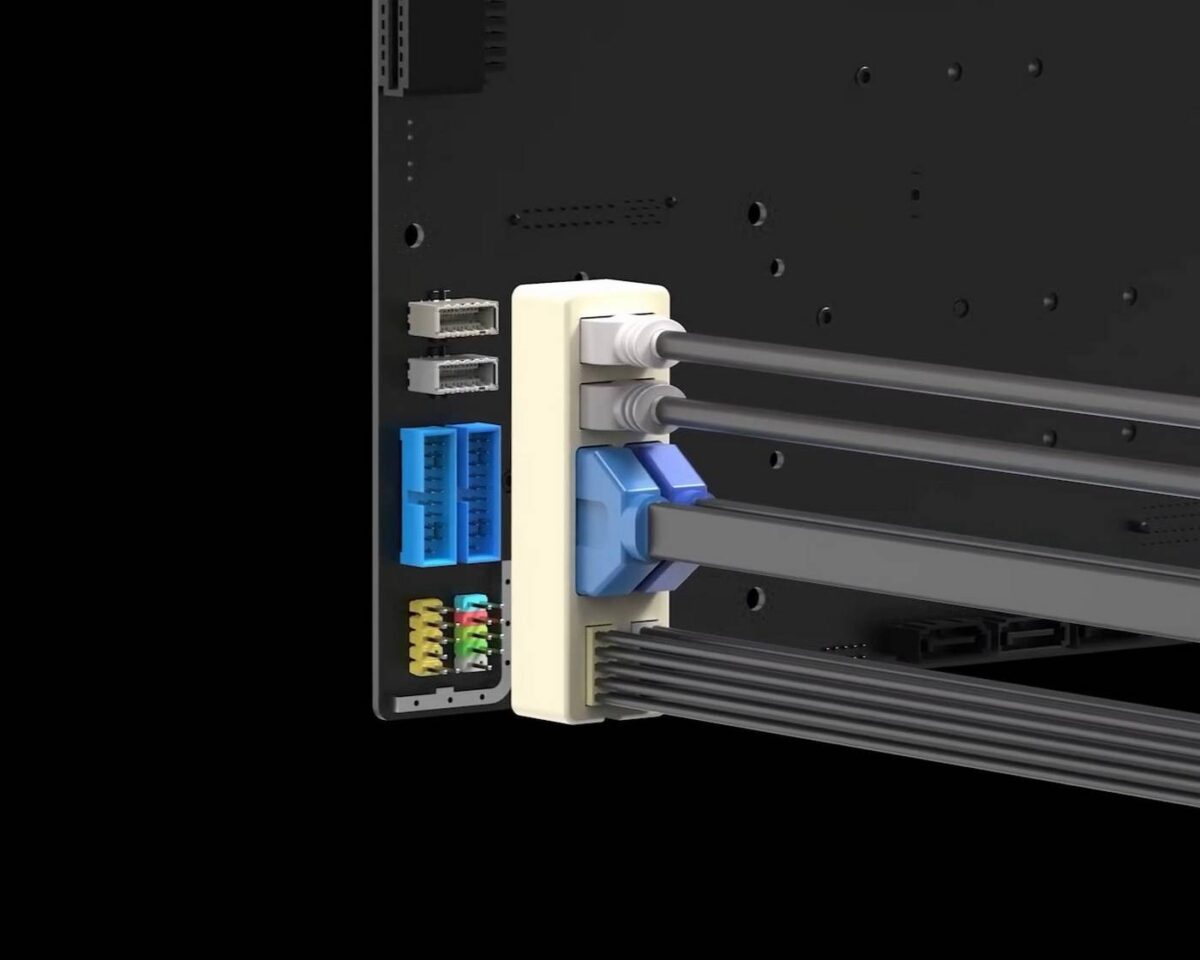BTF 3.0 is continuing the mission of its predecessors of removing even more cables from the system. This latest revision deals with the component that houses the most cables, the PSU, and gets us one step closer to a true cable-free DIY PC.
Standing for Back To The Future, the BTF 3.0 project brings some important changes to the back-connect idea. In addition to moving all connectors to the back side of the motherboard and powering the GPU directly through a dedicated GC-HPWR slot, this revision ditches all PSU cables, including the bulky 24-pin, and relocates the fan and case I/O. Interesting, huh?


To do so, the PSU trades its cable headers for a single large slot that resembles a PCIe, which fits in a compatible socket on the motherboard’s side. This means that all power flows through the motherboard, which has both advantages and disadvantages.
Starting with the advantages, we have an easily maintainable cable-free system, at least regarding the main components. But on the other hand, the motherboard is tasked with delivering all this power to the destination, which puts more strain on it.
Getting into numbers, the BTF 3.0 connection between the motherboard and PSU is rated for up to 2,145W – 1,680W of which will be reserved for the CPU and GPU. This is a lot of power to manage, meaning that the PCB will have to be reinforced, and thus cost more to make.
Unfortunately, regarding case I/O and fan power/RGB, the BTF 3.0 doesn’t offer a true cable-free solution due to the need to maintain customisability and chassis compatibility. For the former, BTF 3.0 proposes USB-equipped fans that can be powered and controlled via a single cable that’s pre-routed on compatible chassis. Users only need to slot their cable-less fans in place and call it a day. As for front I/O, all headers are joined in a tight group behind the motherboard, connecting to the case via a single large harness.


DIY-APE, the creator behind the BTF concept, was inspired by Apple’s Mac Pro machines, which ditched cables entirely in favour of standardised slots that feed both power and data to compatible components. He worked in close collaboration with known brands such as Asus, MSI, and Colorful to make this idea a reality that companies would stand behind. That said, support from more brands will be needed for this concept to gain wider user adoption.
Understandably, BTF 3.0 remains compatible with previous BTF hardware, such as Asus GC-HPWR-equipped graphics cards. However, due to the changes in power delivery, both the motherboard and PSU need to be BTF 3.0-ready. Participating brands could provide adapters to maintain compatibility with older hardware, but that would defy the principle behind this concept. In reality, I believe BTF 3.0 is better suited for those planning a completely new system.


Future iterations will likely tackle fan power and front I/O, perhaps making fan power connections standard and ditching the old 9-pin cable used for power and reset. This should be possible using pogo pins that link the motherboard to the chassis, though this will require tight tolerances in chassis manufacturing.
Either way, BTF 3.0 is already where many advocates of the concept want it to be. Removing cables from view is the main demand of many, and this latest revision does that perfectly. The only aspect that needs adjustment is the PSU location, as its current spot breaks the style of the setup.
To be informed of future evolutions of the BTF concept, don’t forget to follow the Club386 Google News.

